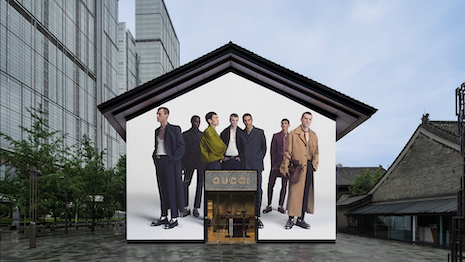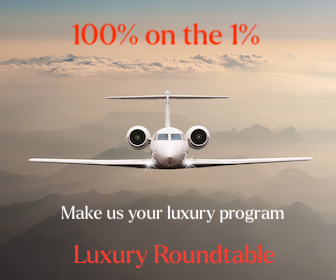By Alexander Wei
While the bullish narrative surrounding the Chinese luxury scene may be misleading and one-sided, luxury houses do need a serious paradigm shift to remain relevant in this fickle market.
The underperformance of the Asia-Pacific region in 2024 has served as a wake-up call for all luxury brands.
LVMH’s third-quarter results for the APAC region (excluding Japan) reported a 16 per cent decline, dragging the group’s overall quarterly performance down by 3 per cent year-over-year, falling short of analyst expectations.
Other major groups such as Kering and Richemont recorded even larger declines.
The industry now faces its most significant slowdown since 2020.
The prevailing narrative is that mainland China – once a shining star during the pandemic – has lost its luster.
However, this viewpoint is oversimplified, leading brands to make potentially misguided decisions.
As we move into 2025, this perspective requires a serious reality check.
DLG (Digital Luxury Group)’s latest report, China Luxury and Prestige Market Update, dispels many of the myths surrounding China’s luxury scene.
Redistributed consumption
Despite mainland China’s luxury market growing by more than 80 per cent during the pandemic, from €28 billion to €51 billion, Chinese consumers have significantly reduced their luxury spending.
Compared to pre-pandemic levels in 2019, luxury consumption in China dropped by more than a third in 2022.
This suggests that evaluating Chinese market performance solely through domestic consumption offers a very incomplete and misleading picture.
Overseas purchases once accounted for two-thirds of China’s luxury expenditure. Not only did this represent potential price arbitrage, but for many tourists, it was – and still is – part of the travel experience. Post-pandemic, this consumption pattern is being revived.
According to DLG’s report, overseas spending is estimated to represent 37 per cent of Chinese luxury consumption in 2024.
While this marks a slight contraction compared to last year, it remains above pre-pandemic levels.
Thus, the luxury market in China has not slowed down – it has been redistributed.
 Expenditure on luxury goods by Chinese consumers grew by 52 per cent in 2023. Source: China Luxury and Prestige Market Update, DLG (Digital Luxury Group)
Expenditure on luxury goods by Chinese consumers grew by 52 per cent in 2023. Source: China Luxury and Prestige Market Update, DLG (Digital Luxury Group)
Similarly, outbound tourism has had a collateral effect on the Hainan duty-free market.
A few years ago, Hainan was seen as a destination where consumers could buy discounted luxury goods without leaving the country.
Although the number of tourists to Hainan has gradually increased, duty-free retail performance still falls short of 2022 levels.
Spending wisely
There is no denying that, amid macroeconomic challenges, Chinese consumers are now more cautious about splurging on luxury goods.
This shift will not only suppress overall expenditure but also encourage shoppers to seek more cost-effective channels.
The report segments Chinese luxury consumers into three tiers: HNWI, upper-middle class and middle class. Their outlook on luxury spending varies, depending on their exposure to the broader economic environment.
 Different consumer segments have varied outlooks on luxury spending. Source: China Luxury and Prestige Market Update, DLG (Digital Luxury Group)
Different consumer segments have varied outlooks on luxury spending. Source: China Luxury and Prestige Market Update, DLG (Digital Luxury Group)
For the HNWI segment, economic conditions have little impact on their luxury investments.
However, frequent international trips have undoubtedly led to spending outflow abroad.
For the upper-middle class, aside from overseas purchases, they may turn to second-hand or grey markets for better deals, which dilutes the traction of brand-owned channels.
But for most brands, there is still a lack of accurate assessment of how these parallel channels impact their domestic performance, let alone integrating these implications into existing strategies.
Striking the balance
With the decline of mainland China’s market, many brands are seeking aggressive growth tactics, often at the expense of long-term brand value.
This trend is especially pronounced in the prestige beauty sector, where local brands are surging ahead, while global beauty brands are seeing a drop in their desirability.
“The current promotional environment in the Chinese beauty market is creating a dangerous focus on growth at all cost,” said Jacques Roizen, managing director for consulting China at DLG.
“Some global prestige beauty brands are already paying the price and losing market shares, while others have successfully navigated this challenging market by sticking to their traditional and sustainable playbook, often outperforming those focusing on discount and promotion,” he said.
 The current online promotional environment creates a dangerous illusion of growth, while simultaneously eroding brand equity. Source: China Luxury and Prestige Market Update, DLG (Digital Luxury Group)
The current online promotional environment creates a dangerous illusion of growth, while simultaneously eroding brand equity. Source: China Luxury and Prestige Market Update, DLG (Digital Luxury Group)
This trend further calls for beauty brands to scrutinize their digital strategies, as online channels now account for nearly 50 per cent of total sales.
BALANCING LONG-TERM brand value with cyclical growth requires local teams to optimize marketing and promotional strategies, while also receiving support from headquarters in areas such as pricing structure and CRM infrastructure.
Please click or tap here to download the Jan. 15, 2025 presentation by Jacques Roizen and Iris Chan at Luxury Roundtable's Luxury Outlook Summit 2025, 'The Affluent Chinese Customer Base: How to Revive the Engine of Growth.'
Please click or tap here to download the DLG China Market Update Q4 2024 report.
Reproduced with permission of DLG (Digital Luxury Group) and Luxury Society.
Alexander Wei is research director at DLG China and editor of Luxury Society.
{"ct":"G4NrB+6lK44Ya3FVgwaLjianMSNM+XZvt+3CHrYDQOLRBVz9ZbNHWvQExH+T8CniCOLhoxetFgRIPoErYORVrDiBRvDEFztZ6WeqGDo\/Ep0x0bm2RVsCRi7qtfduQYWq11LTXiRLWgwtris0N4t+Fr0z3EjlPTufuW8Y7DRjI0OBDUrolatD7nIiD8n37\/h9hEmsemtQXg0iqjooFIWvETBiw\/+h3kxK1FZV5dqrWpayePt\/Bkdx2jgMN1fxwO\/c8BrsIDoLMK+CDl4YBt5sjb0d9M9qKXv+z1OH8f8NnteBnMvHMgnFmMJSwtaXezbz30n3ZGzcpIqdOrEALD+JGESI\/85G5nmhQWekP8\/oT+Yl6RZZui6+rnk+C6+XujAF5EvzHKWIuUHBOPA23PG9CepQld4ua+uhYxFiXx9neZBhhOQaXR3BKRzdiYYbB61JaHHx6Goa5pJAmoqipUU8+RTUtvycT+Qs4WviBQ\/2UKCuuve+Ikd\/8VE1q7L5Fo47TrM8RPwcDUuvReH+DfUZl\/zLjfBjs2Zmv7U4lbZNSkBB\/sUjVHNEJQW\/AnkVt6kghqZIB7W9LQTt+N4UDF1aNYeOs9vt9DFKlfUrIeKeGj\/NybvXWwX3l7YDXsxiV2rDHHRM7em7NIb7XxTZoks8DFhKJr1xmOJIN06ohJodLcP\/T1JLQw6MlIQh0Xai0xETsJwsFvRKCQRFtHymIPq0pYAAnXqQ0lgpfg\/cFgZ+ThJ47O44faoO+EgBzmowkntqH+fOreKRpkpw1U\/dWQxuFWWXda14jXW7wGR14joheiVHf8QQ5n1jtxlQPmQCQ+th+U4+qd9kRgn25Qy58PTyZV6zLXk7U46te\/k5D\/4m0kWdLGRqteQm4WoSj5BQv551TobIP4g39pCQzh6NQqj1QsWp7VI5c\/T4czqVax13k70D3dh10vX9HS5lwwVuZgwKhzGgq\/1i1mMxe6Hlbn6hDFMcL88qKGFakK1mI2TJGi+crzWGHu5I1lgX3JJVqMfUmrSXMsIXn2NYRHeFJORUbHqlDLrU9\/p5djMaTWMLAacG\/SECi3K0uXsKZgI7EOqvA+CGxwZsOJyAAFUX\/eFg7r24ba1DlI+M8XyyfevCbp1YyrfbJuG2cEMk9PlOYcSKYUy5HzkW\/HyhVb5+bBEogxQd1JCkXTyiOuuPDTzD0wb94Rrkc8Cf98HeGBFzFK\/H9omH4OVRZmR+AK5ZFnUMIqCcb6H3p7u3MRYgM\/uD\/hujpQZUfP\/EtWzWpPHJfIE4FGVtCOCWYakdO5rrWklblp+MxpNMRIn5SKByLLRTHu5WRfyzInoR3jx5I4jekB6oBgY6vcHaZtAsn3jS2CIWxp\/L7\/AUif3KO8yeBAGWa7JD5UPQulUJtu9PUvJZWDIGrvG\/7FIbmGNYIJI4k0oIrdCAUeu9L6Qe+XM+mxR99HVNYRMk4yEGywPjz+7IgEsBj7DtU49waQ2Ji+dn76xnwfYNCHKNEwwISimMkRK1By29ehQoMD485R4Wh3LScAGGxVsQlemDQ7e52+Nef77xihLYIlDd5XzTmF1Jl2fF+pbFG10L3dif4LnYehgWJt9uXQ26SZgKniJxvI5fylAJWweoPJJMPbLG39HO8exrmjPqbJC7KFOqjsQ9ICZDJbQpfaiQwozlJFXEeMu+9j7QVljBWsukWPoLcPS\/g+3OHDWbAnUXCtrxKQ2QQO\/49HL6kCkvAykXTXJmABtIbZAhjd5qG57SKy1phx7pOYJPr5fbHjdTShpb+c+VqTA+zk0oNshTKz87HBO28PdF2sRasmrjUazDGFGamdEGhihOb85Qj+xQ4n\/vM9lTN5MlILEhrji68tmxlOECXHIRVTxUGNgcpfIVj6ZTAWzgC7V+jcRhHnkSEFiaNgQ4gCYEZaTl+HFVm3yZpqADEtHs\/mffmpWI6O9Gx7JtPhE15VxaOwyfoRcYV7vwNtu6Ogaa8BJV5ttV2bCbHu0WwBSOhjRtT0r89693DoFAcakxv8RZPu+ORAsnv\/v3lKchkTB+aHZfqLo5cd3jvu9JbLTzGIm65RvU2ybE03i5upJ9Nk3\/ORouDCq969eQLwlwMvClxeK+IE4jcgg7xotKeKaqI1XEYmolUt3xdHHiuOx5Sdd6Es8GpAc1GgF2jpgknJL\/RFiAEy4iuC1IBMtsXYiXF7Y2UFbpB87iFKkBPV2S1dOMyp9GX1\/IP8Vr3vl9eAu8XiOtKxXXI6WKJfF5AeVRFa\/OgSaEM87teUCWpee7n69gOBzK4Ye7t0MBSn4ybmI4+2rLDyrTs1eGIGNyRWrlYsG4bLF2wG9JAAD9wF03tQWm6hUE7fbwQPGynSLsbYJ6qtGtPZWmSKqcBrQPikZibm+9cGQZi5ob6pIR6oZSy35aZBK\/\/MlnxBYoJKWHAzkVIEHEViJIGRsNcJQO0jrMojE1xS7B4ieTigxLOs6JIpd0AelYC+bmk44+XfzIs\/AKi9NAuiy6g\/uVQ5987z4AoVZsclfHpXk5oNc1+Xs4MkgazwBZjAdS602wsKaS5IMiQMHf2X25I5gO2rzZUW0Es9QUbLww8piav\/52VpfFqez7Z1WVN1qoEmNW79FDzjckY5xfGQmW3vrD6hzDB2bUd6kYpudiIeBQKXqbheAP8wvmAxKuLJ3SnxWo9n5izKNL\/JljAdZgK9D+WicOry\/4NgfogVrXl4Hwgjyi10ThOpQlDR8IFSNm+Y4TiNWWG1uHsYtJlF1QNiFAuVQiVCCZaEpnVkdFJyovDf4uzk0OfzDuvzMEGwQ\/ls3Y0xJz8RIkfPLb7oWkYb4nODXK\/JFpM6uOe3ZKvd6430mFipTXJeTI9t6nHYsoN5NwBAb0knkUNsQarxaFzqk77nUnTvdqTqoxB4XQmVmu1M6tDX\/RM0EW92tGGWF1bsbjToQlunkuuLxU8syofB9mM8tq08xdgPwhKVhuj2fWpcbW7nkMwyw25HBBfWy+G9CMHFbm20i2Y8jyap2bx5SHmlRahMm7TJ3M0TTG\/lM40qdexwcqBskiySP+mXIfP6EcVU8YXDMcCaOy3ksJTmS2AoL58ykT58Wx1WF0YZNW\/Z8fVn7ncKZaMH+LJ9j\/gXsKE7GMCj+7RqN69itRT+WhVCAjYUHVrVfmhdtgbfO5bYKXP4BOy5iMNY7gPbwgeDL+v9lahci\/tjHM2pHHVv4IW5FsCcgE+8I4Bap4qOImjiIpR9H+SEXN3sUGR9AmKkM6FABM9ZFjs3kSaBRSSe3IWzXujfPRo3iNkeC4b0\/CICx5l0\/CUTD\/lkL6MooOqcUECyZLbKihoIJzvjc8htahJBZHNC7fYFc2A6Fa+H0qDlP6UOGueJzUdtgxS0FaO4vXGHjEIFlB\/5kgtHtr7+55Y5jKCNLVetEp+M2oUXV504PnWwz\/GugIeIE8hv43hgUEtx0XjNgS58x9KyTgQsBw8EkFe5136snd6j+U0Qts\/Dfos8eq8F0DmMewnCpjEVp3uusObImmb2joq5p8vG8BmWEIPGQDpqp4C\/+JGVdfPzbS79MFcQqdzH8MJ\/Q\/6\/nZwe3EAnVZ6UqqeY8+o6cF3zPU64syXfMU\/9WzEDOUflhmzF+KvKICnDslSqfRhYrSXYKN++0rDvDK4r9VeuHY6lrqUMT6bMX4bVyeuBKN0y8qknunO+y8BRIr744om0eA+RNpWNdZkwliMibk2HjTgK1h6x0D9Pdza4AwNum+K1pDu6jz1dnvg6lXZZjIcgxHpuh\/KP8Z5K0u3QkVgUvt5XjXyIgzLa1LpIl42Flmk0Tt+GVIBdwvLrFmCyF8sgxv\/DP+xqmXM0IfgP20Ezn6vU0kmTWoYhfMSBZIa9mRYh4k24VJi8KGNF7MVCeS9mtiC7RHi0RwcYz245S8DpVBCrtR\/6ThinCLYcE4s7EToL4yiP\/24a6imrQLlf\/xHJmqaJO7NwARYWWqr98+Jq3RCmRURjW39L1APPEFuaTkXOWYKL7+Hy7rRHjKsH2XyhSiyYEhXiJHcZ4aGndIQFB4Aj46xHQP3ZT7gcvgkny\/68K8mH9M44K4vHUypnZJmdAds\/Hhc8l02ISXKqXYV5q0p97tj\/FuCIFheDtPsGSDzToylyKHdCwcqxHC8455hXFEcUaN\/At4JxEVM2kxKAyuPwWufc2vYsA+XCuTZ9aale1Gdk\/i+dq3L+r7Ja+Pjz93KP5b37vDlfDQWFpOt3v\/2ETYV6WlyWkz9iPmH22mQKCzklmazJlsjVcflQG6o6WlC9x8nNzoWSgXpZ\/FLX0RJ9M+BIwFSQsGXnyOh4Z8NCMWLkhNlVXmu16nMhYK7hFG9+8EGY0Rkuwy9fY0uGBmTcSsaYaaZEb7pv13sNvAAkD7Amvcz4ftQj4mD96SceXSCy8rP6tTXf7LMwFiVS9KmspbrXg0aE5vTElil2XcB3lm70UzY9xT0+t\/LRcP68lm9RjvnvODh6uZxJh0ooCAo94xziDA6Ay5Rnshu9UZXWx6JWwzDIkD8aOvgQOBjcT7abHUXgyUm70TaMoYm+SFi2z8q\/JUiPNzB9inZX64Vb2LSHQhpzP1VmCZyLG\/J0pL5Iw2HugZXFrGgWpkhAPJQmN3oWeFMgzty7Br9\/U+EEEYBkRpf5NYVkdzzhJqa6qHwF1szNYtQ\/7OCDGL+KQw8Yrr+DgpF8g2evqsIhMtnvRLne67UqOisqNe\/eQ7C1uYRR4QBc2IjD42R\/HAo1OPnF4VJhAxpjVpWnstUOSAGzbpRLChxxT5cYCzwDts14G1VSJDhegkHTqq8dIrH+7rEgcAM\/Cl6ooXgLIoN03vhRw3FSXbIfC\/rphAOnv8Iyv3iNWprT5S6TGLkdV1QjvjklkXWTLbAaJtGnWGNZn4wAgRfKlK0buxft0G6cgxnWBctuR05nk4uVGXz7k4nquwLON4xZndRoJs9ItBeTqTpDRMSU2MFYHlVFaP57RWIDzWmiBjjDUa9XAksl+ZDFB40m5H\/Coc4c6RdTNVUNZeSe0dNkVF6W0IxWlBjslBcxccE+Zi68juB\/7WQixGS1RrPKI7OTb1tOkQlacQK7ylmJdKvXQppGuKDt9lwrczxehRCoedaIcH6RVs+xLAPwtf4tA\/B\/IbscmKRzW\/mm85MwHDE+dsBFcM5XDaqt7GnxlHRt0\/10MYek3tQZXQBFxqYvWpzdIy4VREa7JiMf1oVsNdG6CnehZ8OsuZ10apyTv8\/gjfpp3iX+y0fVEFJeCaK7AUN7iEfrE7Gs4C9f0LiwCKxWi5oDAOZyKKFk60cebGGWF2bwPVM0smh0\/nl\/Nh62voVYsQ7LC5Cty9vhdPItOOaxjy2aJ0UhUE0cmykyOPbqynDh0vJ8xrov+QnF6yi6SPixjKMqW2qVagvq3zmWiUHqipBaXqNWkAnBzdvTu3C2ZnHDcag3KVdCRncg\/JLgKBDoXT2wdUTjqRD\/YnIm5QCP+HS0qDYMej9NX3qrsFPN38qidyfbno46PjCaHxNXsIIXBeTZKUt76O8n5S8pBvU+K+0SrU30IbHKDilkpmg6LtitT12vaq8IDPlAmf0rQ1Wyl5CtTbL\/j1nm2KNpvUnGXfksYCKW9KLJfR9Eskt26xS7HO1uSAdE0+xzbq8wy50bLZz0\/IeA365i2qb\/FCfVDCyKXu+md27lAWlnfHoXLuQSv4663IIqauBo0P9UOVep1Sg02lLSNcoXrgHKasjuFRgzticMUJc6oxB0KsotT2jI+MDw5DyD1CS5M6pNHu6eRRLXdn4K9GtkJelctvgMKxWVYxaeVZX2DY13Tn9+jVUg679JrOMF1Ji+DTbnJRRsA85UpW0TMcWRMpgzh\/ed8LA3HMlWqOecHGtEtAVnysxsdRcDrWEd808EtUIYsFAP\/rOGKqupwka7UfLC3fNd7DfYI3MLNl7crmEHD9w3jDSjBV\/j48HrVd8BjKI4VHW6DlGuOOEFWdy3GjdUZLH1+p89g3vNYV0jfrtLdE9UnQKttGgU9IYJTqLQpFKi6DtYlFvC3iVPiwSnL\/QiuzynihuE\/daDKGM58JUeapnAoq\/xDbLC8aW1wYulQOiarFaIEm3uQ5ykwG6O0z79ForGZHomXblJYvooKKI\/CmN9ta7n7+raP09WgkbUiei7VJgHBsjfwCdVXYmo\/1KyWTEkSyUl9MEkh1rgGkSL2sdvAMindmNCMhbc+fZdcEjdLnMLpYjndnK2IVfyPTPQBFvdigCznDbOpyFNz97FHjM4j44WAYQepr3Ms1x\/YfGBz9C8q9fJ4uZbW49b3EMmooLqF59MJ12+aW9u5vp43mu7FSR9\/R1osIWZUjx1d4JX7DcYQHUq\/0PB5LlrG+Bg8OaCg3tgLlc7QJy172abF8wbhye\/wD1E3Ip+YVtNb1jsW0luJfPn\/wmpvRCfVSAlXN8vMnxaiGzv+PD+Sqm5sqnTpV3PDqjiVYokc6wMVKgkXqmvskPI2xYhFDgCCKaii1t7BFWKL3jocLPDgul5bgmci5c7HheHCa02ISkL3Q\/VYi\/S3xlriWqbiYrmirPeKiBmYSVZaBgNH6Lj+pevkQjPE1ZMMim4Eai2ZTPCXIjpZ6c0aiRU2C06WpDkD9K3NeJ3X9C\/CdsTeoldiHkSY3KaSXiJlKdHZ6ebmNO3eA2j19QcJFOGG06K3jMdgU1E4tDuocGjr\/eEHhqji1AIoYWsU++qwSNOMplNsxYBIe4Tnf+6dU16BG3sVD83ViELhAnPfkXTRLIUW2IdlnkVsyzSeF1R3WbzKWsYFvnCymrO0GORVcwhrAljnRMBU\/spBp40eRlEcicrGVEF1rE4Ckl6iN16gUMlIrnz5F5ckbTq\/T9WsV7tYF8P4XmLE1c+v626phLxi15mclVRU7L0MIimjTKKnX1mkdlUUmDE+LsWIVSLwVgTKxnR7wpsSz+mypIiWYlu\/sFEoaiGcms0N4\/F9PU7X5VCvrUVRe0aU5kS8ULNO3AL9NNvWTGFhQw8lDD2TTIOZtbbHcDdtg54tw2C1Wrdqh9t+3lYF4ehs01j2SCHRftyFBCXRbwHNEioUgjfrL5FuUkexQ+oaDxIC8f193TD0fVZCtcMZyrhT8o7U45cmKXdkLkIjfEEp54HkcyOSSYpEwoCuPmgWoD\/CqOE3XzABSr57asxdcIbvHmPTq\/6fe0kBQ3v2eOnauKAyDYZAlyR4GbsaM75ZPlhzqB\/qL34dnVmvuaRW7C6JRHly233Zfy8lxkiqoF92QkiX8bYXsm95qfKCH4l6WsXNMMiw2+UxWNoGb8DAltlhqZIMerFCSAgx3fVo+b2DGL5yaAmOzc\/B\/2Kml8AnYefHyY9oawgL8ZkshBcY2a8zreD73Kx\/GjLuVbWzdYFkrB7fUlQescawthJb\/UZTfv5xGoJMzP7Uz3988TizgrVQVNFADBCtHPMNlauNpAIx5Fq5sfvNt9cspq1TMAG9PQd2PO86bSTdLhwxDsqaMeB\/qjG2lZcl6zYGeTyAWUOWqTI\/R7cQmaKW9MNdz1IyW2zAO30NmfUChz+5RTXMRY8+KAMp0ielfGvOyT4wM9z4wGI8htBdE+EnQpqbFciO9+Jtq6DQfATY89umF4Aw\/Qyx8yYsBAo2spHD3ApwgkYIcdSVOLY7wKwRbX5ZCRoG7IRSek5U7vYYX735tiC1lpBmR7Oee3Dkv+2gZ8BXPpjvmqAD7t+o8Y8LWFiWJp5aMoEN9CWm5tQclM2GwuSZ4wxwPqYyUrfzqj9Mnfmx\/lw+Ecq7C7gyDgNcmLs32c7Tm5gHSs5A+zUcZIuCfYu5b4imQHnOL8tplw3FgyDg6wBHkKQoh1qcZqZ+pqHXs4L5C5xltvJTu8YY6t+RTVfaWdTM2oJXIPSJPK+N20Ljmm7Hr4yEAoESOB2rt0RmW\/eoNQ4dx9mCRIjunPIjQQIVi4LfbvZ2fipsruWOm9wJrHKekHcrpb6Tw\/oU\/Qekt\/B+dgofD69vcqSFa9Dng32bHPLLAex3wGrm8Q+d7ILZ6yaI+W7nYRTv1J61McAMfG1\/dVElrVvwFW5KG\/jzNzwOI1LsFUfOJCvMe36zQQnYKlYjpU\/F+MseeibHC1YqKAKF8AcbzZvmG+VW2ZzQ15FQt2qKjYZe77KpCrqWXJq1rtKdIO7l1P4daHC01LxA6V39UAhXr+mZYPrltp5+VERq1ZbGxfp2ASa+9ZpkaXYm9VlxCZrqRbdQXZEpCPM6J8\/DtGX6b5x9oXmRCmsaCJ\/MjvQFJg71gFuES6YHhwWuJCjni3ASjzwohOeYrMVjrfh6UnXL\/lhWnzjnH54vHw3k1vZmzoZxW5O4ubenQdBqkZ1y5gYN9g8kUTWy7MHhbwSYhrDB9vN31yYBOT7h6er0PbJwM6A\/K1Bm3qADPfvbp0IY+y4YtfHiuHEUHW2jrv5xvJJGk3HGPYrmP\/ynScAhVDOjKW\/E3OVOBZ7Tgtjn8J8J7te8Aw7drvlbS6oMGT\/w39bXHBLUGnGMLPiyluidQgA1wlQBcChpBAZOuaqV3X\/t7qBtvy\/eJccGwe0XOW2KoomzH5o9vn+0Xecx2\/2F+na\/H\/oGYQ1fn12oqvCE4yoB4aFFFUtzrfrBho\/bJj0YTN1oHfIRzpesmsGNeNsbQW8uPc4O30q0npwQDEpFpiiwt\/ecUTX7OB9BmslOGtug\/cOFLx6CK\/XCw2vGm+hLzPJ3SvizVgaGRcU03pDbf61GsQLHjPsLhgwhPB9ihMCl+J0fSQ8KFrfPxomea0SIHrEviUa6j1TIwDM\/RenzCyla7BZbrUNNKfbbKOidt9pV+6vJrTAybM9evNdA11Xtk70d+nL1OpZdwneYrwdJ8fBh6+7Vp4wmTnevgkY6s8HyZabTUW75SowX6YGhqFP\/5iSbY86HaqIBKzs0g3He5h5N102zojfMRZZn\/kK42NU40S7bIt1i+KCpC3dvhETw5OKhqxPmBfEI1jfK6dxuB5DtJFX8RVUP0WDSLIHhG2r2B11Qr10ghp4q9hRsJw4gA8j2O8Q5gYnXbVFoahv\/m\/6dMugb5VsdkjZV+Sb9HzKid2ZrYP\/bb7zxlV2VcXNHeK+VU8FNJcQfmtDmQWqYb0ddxQOMjAabEs+Njf8KHWC3bdM0gyB6rHFWGzR0rdIe\/xveZ23rfX4+U32CrnEroIhKS2W5qp7dzc3jxW0QJiEj+IM1fY60OWWMYvKeL85TF8BkxCOxxZjtj9wiEjS2hI2cp2p2Mb4QSxpwMKIOSK6zm1INF5d50QKuA1k0sJaF0Vlf7pvKvv7Stbt+YyT67cRCOt0Np1HumrqJldZ1maa5OeleEZ5kk6qzi3tgbORHIlOLi+LnVl2tDgLK9UER61bJWDTmKhRQMhSKzQtZV0ADSFLLLTwL+NEMn8uinmVGr8mhsGjr8UaI\/4+WA15YDzHzZtUAaYckBpxOMCpWXdI\/W+QYGONacvwUX3AZvOkU83YGSRy9aNkrAHFQUn\/IhkJ+lWt9Hz5gCxG2w3375NSKAoomdISMLucxPUTxkaGjHOrmdk+saYLJazBW6sClMkpRusHwC8OCp5i\/YftECJB+FJFfkFISGPds+1lsGl4EtonKjfc42qm3tGv9raIY856LkgMOKTOkIGUlHlSS8q1+djFduS89gACe3qglKBeIHHhIuynSP6YXOLfcwwiZvHTg9kO0uFf+MFfjqiKDeEmI3rqsEQ4dfyW\/udeWxAY\/Uw+l2S+tn1gVJD3H+GkSF3hTYqUP90pxFaAt845c\/AUdBEtxuIHBZykA7egD\/VYZtrpj9tGDoBAghg9TRTYKYIGJ7CTQI\/7QFgpYlZ5ty5\/RpQTHs02fGIoiDYB\/EKWbi1T\/\/bOAmVHn8\/YdZ3xKB1okAmFQqmOuM3zluJNUhV1PCpHF6lVr430TWjGo8MMNiLKgpphK+z1zgO182YXRLU++1Q2X3Ns+9jJYUIxQas5dvrDQTnit3\/OgYVLARymlIarkCv4u94qnUYiRPl\/yWK3\/\/\/2u9UweWrfrUM04qXDVOFG\/oLJ3uZrWtyoWBEeJ1FQ1F8m6sX\/56d54aoTZiF81o40ZEu\/xL6Y0Jee7jgNdlZmHRPKIGwJicqwhM79iknxJSF4FhY\/m7m4B0yZnefkD8\/0vUJtZcfZKKhKdQXqIEQdG8zTPtLQLu8PyykP+eYLvLfl9AAIdZxO2gyho17zM5aM7h58Pci1Vn\/b3ZbDeET2desVwbwvEScw48stzP5LFxMG\/NplgfnCQ5ww87\/8rtsbYYVibpsoKmg4hr6erRqQX7Dj8adp8jAughbGs6YsHMo207rMqqG41f4w9pTQzu\/SMxFvLxymXNzRbcyP+NoSxTdppXlcqA6zTV822O9veXVZAvgOK2JGslLe+i34l0ZpjanqjBRSLDsoojAvoSWT7iyqJEPI362GOQJt7PrdHAdr3du7Olaj1OclUlMLKaEVLaEkwsISGD1uvYO0spDPQAog3mAFOLL\/3DQHsPQHG\/rCX1fZsG5QpuwJqg85ZPLi6l48qVdDPdNfZaZr\/s2OgKIiFxL9Y55vBXrQjWXXEJ7a6FWD1Rjh72JzozjJL0wdG1slMF6JFnY9vwsugbIWO4gFsqZilXII8+rMjocAif93ZoyJFx9BLUuIU6kYNmddA\/qaTTntWpN2Vh+UTbne+RbuDTSxS1nv5vo9ivhkIDQJQ70XsE+XbqukNSGECyBmaHfuwifjIkwXoMrJ2CAlJETolqAwNDzYXSDMzNaSQ53Rxu9rfNjQeRz0r9huvwIH0+T+ORVGGHaCcQBiFns\/TtZbbsTCi2C\/L\/LDwdffrA2ZQ\/bkqs6QLSzAB5ukEqc3Wn3IWIWpfpQFdj4JuY8QsFhY6P\/q840qgurwGlQ\/+gj2\/uQMh2V5vfVBx\/UV\/wk\/9jn2CK0eA8o0E5uuwt4ZKSkR+updXEvpU4cCa\/HZuhZH8hIzA6S+O3vYuLs9w\/g\/VboIp2abszwgXNx4fcS8dFH6kuA2PItKidITPV84nzRZgYmU\/h80aNuA==","iv":"b211a2365e1be374ada9ffe0b073e980","s":"49cf334f8db18036"}


































 Expenditure on luxury goods by Chinese consumers grew by 52 per cent in 2023. Source: China Luxury and Prestige Market Update, DLG (Digital Luxury Group)
Expenditure on luxury goods by Chinese consumers grew by 52 per cent in 2023. Source: China Luxury and Prestige Market Update, DLG (Digital Luxury Group) Different consumer segments have varied outlooks on luxury spending. Source: China Luxury and Prestige Market Update, DLG (Digital Luxury Group)
Different consumer segments have varied outlooks on luxury spending. Source: China Luxury and Prestige Market Update, DLG (Digital Luxury Group) The current online promotional environment creates a dangerous illusion of growth, while simultaneously eroding brand equity. Source: China Luxury and Prestige Market Update, DLG (Digital Luxury Group)
The current online promotional environment creates a dangerous illusion of growth, while simultaneously eroding brand equity. Source: China Luxury and Prestige Market Update, DLG (Digital Luxury Group)